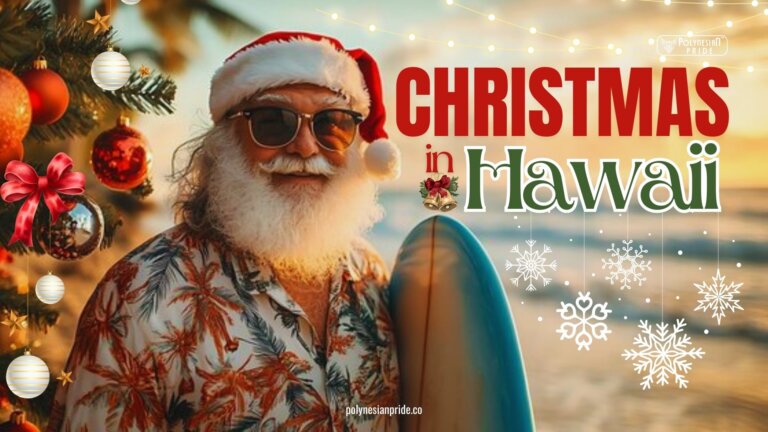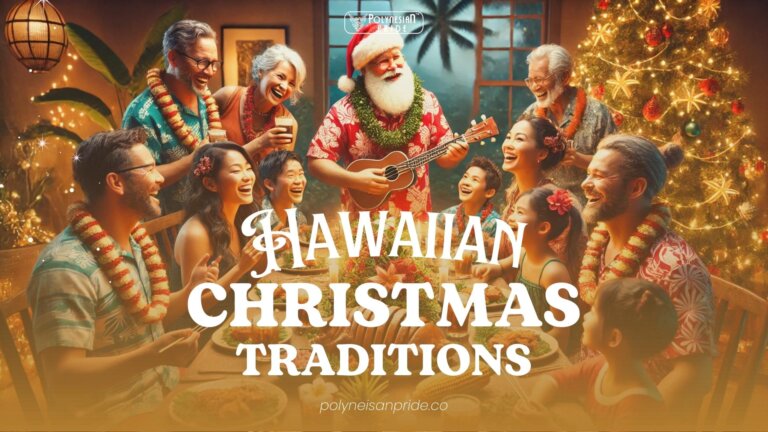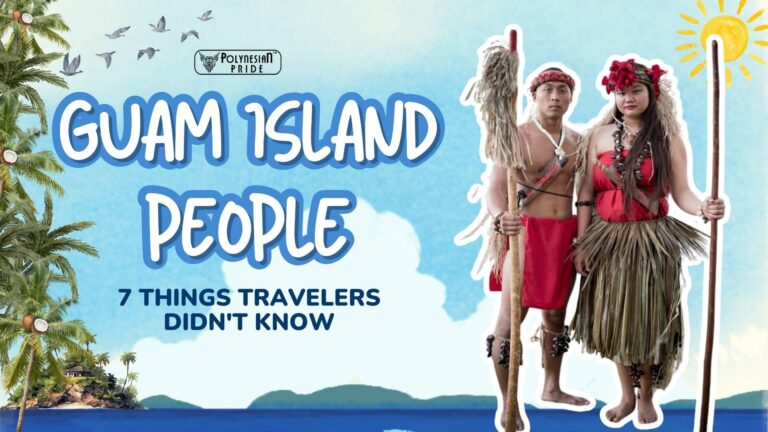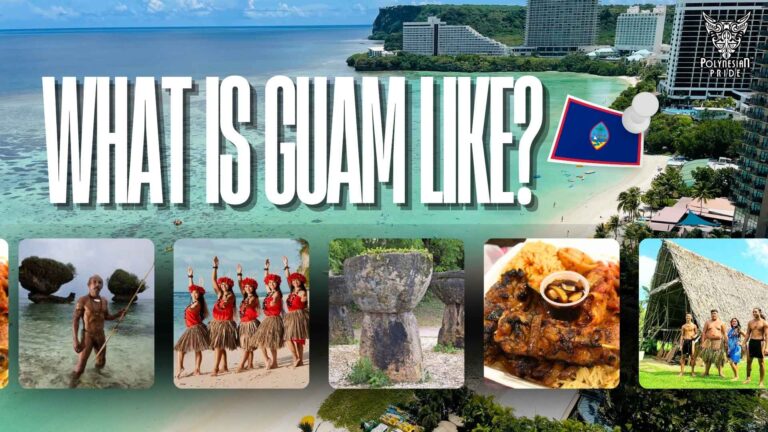Western Samoa Culture: 10 Best Things To Embrace Fa’a Samoa

INTRODUCTION
Western Samoa Culture pulsates with an ancient culture known as the Fa’a Samoa. This ancient way of life, deeply rooted in traditions, values, and beliefs, is a potent force shaping the everyday lives of Samoan people.
For visitors, experiencing the Fa’a Samoa is more than just a tourist activity; it’s an opportunity to immerse oneself in a unique world, connect with a different rhythm of life, and gain a deeper understanding of this enchanting culture.
I. Experience Local Traditions
A. Exploring Western Samoa Culture
The Samoa Cultural Village, situated in the village of Apia, the capital city of Western Samoa culture, serves as a hub for experiencing the island’s rich cultural heritage. Visitors can immerse themselves in traditional Samoan customs, music, dance, and crafts.
The village offers a glimpse into everyday life in Western Samoa, showcasing conventional thatched-roof houses, known as fales, and demonstrating cultural practices such as weaving, cooking, and tattooing. It’s a place where guests can learn about the unique traditions and customs that define Western Samoa culture while interacting with local artisans and performers.
B. Fun things to do in the Samoa Cultural Village
Traditional Crafts Workshops: Join hands-on sessions to learn Samoan crafts like weaving, carving, and siapo making – a traditional technique in Samoan traditional clothing. Skilled artisans guide you in creating your souvenir.
Cultural Performances: Witness traditional Samoan music, dance, and storytelling. Enjoy the Siva dance, fire knife displays, and rhythmic drumming.
Cooking Demonstrations: Uncover Samoan cuisine secrets with local chefs. Learn to cook authentic dishes with fresh, local ingredients.
Guided Tours: Delve into the village’s history, customs, and traditions with knowledgeable guides. Gain insights into Samoan life, architecture, and spirituality.
Interactive Exhibits: Explore exhibits showcasing Western Samoa culture, such as tattooing and navigation, and discover the islands’ rich heritage through multimedia displays.
Cultural Workshops: Participate in hands-on workshops on Samoan customs. Learn coconut husking and traditional dances for a deeper cultural understanding.
Shopping: Browse onsite shops for authentic Samoan handicrafts and souvenirs. Support local artisans and take home unique souvenirs.

II. Making Siapo at the Savai’i Workshop
Discover the art of Siapo making at the Savai’i Workshop, offering a glimpse into the essence of Western Samoa culture.
A. The Art of Siapo
Siapo, the traditional Samoan barkcloth, is a true masterpiece of artistry and cultural significance. Historically, siapo was used for Samoan traditional clothing, ceremonial purposes, and as currency.
It holds cultural and artistic value today, often featured in ceremonies, decorations, and as a treasured gift. On the island of Savai’i, the Savai’i Siapo Demonstration offers visitors a unique opportunity to witness the creation of this beautiful art in Western Samoa culture.
B. Create Your Siapo
The dyeing and painting process is one of the most fascinating aspects of the siapo demonstration. You’ll learn about traditional methods of using natural dyes derived from plants and minerals to create a stunning array of colors and hues.
At the demonstration, you’ll follow the journey of siapo from start to finish. Skilled artisans will guide you through extracting fibers from the paper mulberry tree, preparing the bark, and transforming it into a canvas for intricate patterns and designs.
Under the guidance of experienced artisans, you can paint your piece of siapo. This hands-on experience connects you with Western Samoa culture as you create a unique and personal work of art.

III. Experience a Fiafia Night!
Fiafia Night in Samoa is a vibrant celebration of the island’s rich cultural heritage. It offers visitors an immersive experience of traditional Samoan music, dance, and cuisine. This lively event typically occurs at hotels or resorts across Samoa, where guests have a fabulous evening. Fiafia Night is one of the most interesting things to do in Samoa to immerse community spirit of Western Samoa culture.
A. How to attend
To attend a Fiafia Night, visitors can inquire at their accommodation or local tour operators for information on upcoming events. Once the date and location are confirmed, guests can purchase tickets to join the festivities. Upon arrival, attendees are greeted with warm Samoan hospitality and guided into the venue, where the evening’s program unfolds. From traditional dances like the Siva and Fa’ataupati to thrilling fire knife performances, Fiafia Night offers a captivating showcase of Western Samoa culture.
The essence of Fiafia Night lies in its ability to bring people together to celebrate and appreciate the beauty of Samoan traditions. It serves as a platform for preserving and sharing the island’s cultural heritage with visitors worldwide. Through music, dance, and food, Fiafia Night embodies the joy, unity, and generosity that define Western Samoa culture, leaving guests with cherished memories of their time on this island.

IV. Discover Samoa’s Market
The bustling markets of Samoa are a kaleidoscope of colors, aromas, and experiences, offering a fascinating glimpse into the Samoan people’s everyday life. These markets are not just places to buy and sell; they are social hubs where people connect, share stories, and celebrate Western Samoa culture.
A. Apia and Salelologa
Explore the dynamic markets of Apia and Salelologa, where you can immerse yourself in the rich tapestry of Western Samoa culture while indulging in a delightful blend of retail therapy and cultural immersion. Fugalei Market, the largest market in Samoa, beckons with its bustling atmosphere and many cultural activities happening all around. It’s a sight not to be missed, offering a captivating glimpse into the heart and soul of Samoan life.
Meanwhile, across the waters in Savai’i, the Salelologa Market presents its unique charm and offerings. Here, you can wander through stalls brimming with local produce, handmade crafts, and savory treats while soaking in the lively ambiance.
B. Traditional Crafts and Local Cuisine
If you’re seeking artisanal crafts, the Flea Market is the place to be. It boasts a more compact yet equally enticing array of handcrafted treasures. For a taste of community spirit and local flavors, visit the Samoa Women’s Association of Growers (SWAG) Market every Saturday. Here, you’ll find a charming gathering of vendors showcasing their fresh produce and homemade delights, creating a vibrant tapestry of colors and aromas.
Cap off your market exploration with a visit to the Night Market, held on the last Friday of each month. This lively affair transforms the streets into a culinary paradise, offering a tempting array of street food delights infused with the flavors and traditions of Western Samoa culture to tempt your taste buds and satisfy your cravings.

V. Unveil Samoan History at Falemata’aga Museum
Unveil the rich and captivating history of Samoa at the Falemata’aga Museum, where artifacts and exhibits bring the vibrant past of Western Samoa culture to life.

A. Relive the Past
Explore Samoa’s deep history at the Falemata’aga Museum in downtown Apia. Discover a decadent collection of artifacts, photos, and exhibits showcasing the cultural and historical evolution of the islands. Dive into the intricacies of ancestral Samoan life and Western Samoa culture, from ancient Lapita pottery fragments to finely crafted tools and ornaments. Learn about the impact of European contact and colonization through missionary artifacts, colonial maps, and historic documents on display.
The museum also illuminates Samoa’s struggle for independence, highlighting pivotal moments and influential figures in the nation’s journey to self-governance. Each exhibit provides a fascinating insight into the events and traditions that have shaped Samoa, making the Falemata’aga Museum an essential stop for anyone seeking to understand the unique heritage of this Pacific island nation and Western Samoa culture.
B. Interactive Workshops and Demonstrations
In addition to its static displays, the Falemata’aga Museum hosts interactive workshops and demonstrations that allow visitors to engage with Western Samoa culture firsthand. You might learn how to weave a basket, play a traditional musical instrument, or try tapa cloth painting, gaining a deeper appreciation for the skills and craftsmanship of the Samoan people.
VI. Paddle a Paopao Canoe
The Paopao canoe is more than just a vehicle; it is a vital symbol of Western Samoa culture.
A. The origin of the paopao canoe
The Paopao Canoe, which dates back centuries, is deeply rooted in Polynesian seafaring traditions. Historically, ancient Polynesian voyagers used Paopao for transportation, fishing, and exploration across the vast expanse of the Pacific Ocean.
The Paopao Canoe’s design is characterized by its sturdy hull and outrigger, which provide stability and maneuverability in the open sea. Authentically, these canoes were crafted from local wood, coconut fiber, and plant fibers, using traditional techniques passed down through generations.
Today, the Paopao Canoe continues to be an integral part of Western Samoa culture, serving as a practical means of transportation and a symbol of cultural heritage and pride.
B. How to ride a PaoPao canoe
Embark on an exhilarating adventure in Samoa by riding a Paopao Canoe. Start your journey by partnering with a local guide who will equip you with everything you need and share insider tips for an exceptional experience. Learn the basics of paddling and safety before stepping into the canoe. As you glide across the shimmering waters, soak in the stunning vistas and be mesmerized by the diverse marine life beneath you.
For an extra thrill, why not explore the lagoons of Savai’i? Some accommodations, like Joelan Beach Fales and the Vaisala Hotel, offer Paopao Canoes for guest use, adding extra excitement to your stay. Feel the rush of adrenaline as you navigate through the gentle waves, immersing yourself in the natural beauty of Samoa. And as the sun sets on your adventure, reflect on the incredible memories made on the water, eager for the next chapter of your Samoan escapade.

VII. Stay in a Beach Fale
Staying in a beach fale offers an authentic way to experience Western Samoa culture, providing a unique blend of traditional Samoan living and breathtaking coastal views.
A. What’s a Beach Fale?
A Beach Fale is a traditional Samoan beach hut or open-sided thatched hut typically constructed from local materials such as wood, coconut palm leaves, and woven pandanus. These simple yet charming structures are commonly found along the coastlines of Samoa, offering housing to visitors seeking an authentic island experience. Beach Fales often feature amenities such as sleeping mats or beds, mosquito nets, and shared bathroom facilities. They provide a rustic and intimate setting for travelers to immerse themselves in the natural beauty of Samoa, with stunning ocean views and gentle sea breezes right at their doorstep.
Staying in a Beach Fale is a way to connect with the laid-back lifestyle of the Samoan people and an opportunity to unwind and rejuvenate amidst the tranquil surroundings of Samoa’s pristine beaches.
B. Where to find a Beach Fale?
Beach fales can be found along the coastlines of the Upolu and Savai’i islands in Samoa. These unique houses are scattered across various beachfront locations, offering visitors the opportunity to enjoy stunning ocean views and easy access to the beach. Popular areas for beach fales include Lalomanu Beach and Saleapaga Beach on Upolu, as well as Manase Beach and Lalomalava Beach on Savai’i. Each location offers remarkable charm and amenities, providing travelers with various options for a beachfront stay in Samoa.
C. How to stay in Beach Fale?
To stay in a Beach Fale in Samoa, choose your desired location along the coastlines of Upolu or Savai’i, and either book in advance or arrive directly. Check the luxury offered, ranging from rudimentary huts to more upscale options, and pack light with essentials like sunscreen and beachwear. Upon arrival, embrace the mellow atmosphere, relax in your hammock or lounge on the beach, and disconnect from daily life. Respect the environment and local culture, exploring the surroundings through snorkeling or simply strolling along the coast. Engage with friendly locals for insights into Western Samoa culture and traditional activities, ensuring a memorable and authentic experience.

VIII. Play Kilikiti Sport
Immerse yourself in the essence of Western Samoa culture through the lively and time-honored Kilikiti sport, offering a captivating glimpse into the island’s rich heritage and communal spirit.
A. Samoa’s National Sport
Kilikiti is a traditional sport played in Samoa that resembles cricket. It is a popular pastime enjoyed by children and adults across the islands. In Kilikiti, players use a wooden bat to hit a ball made of coconut husk, aiming to score runs by running between wickets. The game is played in an open field or on the beach, with teams competing against each other to achieve the highest score. Kilikiti is a fun and competitive sport and a cultural activity that brings communities together, fostering camaraderie and teamwork among participants in Western Samoa culture.
B. How To Play Kilikiti Sport
To play Kilikiti, follow these simple steps:
- Gather Equipment: You’ll need a wooden bat, typically carved from a tree branch, and a ball made of coconut husk.
- Set Up the Field: Choose an open area, such as a field or beach, to serve as your playing field. Use rocks or sticks to mark the boundaries and designate areas for wickets. Divide players into two teams. Each team batted and fielded in their turn.
- Batting: One player from the batting team stands in front of the wicket with the bat. The bowler from the opposing team throws the coconut husk ball towards the batsman, who tries to hit it away.
- Scoring Runs: The batsman scores runs by hitting the ball and running between wickets. Each time they successfully run between the wickets, they earn one run. If the ball reaches the boundary without being caught by a fielder, it’s a boundary and scores four runs. If the batter hits the ball over the boundary without touching the ground, it’s a six.
- Fielding: Fielders from the opposing team try to catch the ball or field it quickly to prevent the batsman from scoring runs.
- Changing Sides: Once all players from the batting team have had a turn, the teams switch roles, with the batting team becoming the fielding team and vice versa.
- Winning: The team with the highest score at the end of the game wins.
Kilikiti is not just about competition; it’s also about having fun and enjoying the camaraderie with friends and family. So, relax, cheer on your teammates, and have a great time playing Kilikiti, a precious part of Western Samoa culture!

IX. Getting to the O Le Pupu-Puʿe National Park
If cultural activities aren’t your thing but you still want to experience Western Samoa culture, head to the National Park, with lava cliffs & black Sand Beach in Samoa.
A. How to get there?
To get to the National Park Lava Cliffs & Black Sand Beach, hire a taxi, rent a car, or book a guided tour from Apia. If you’re coming from another part of the island, such as Savai’i, you can take a ferry or fly to Upolu and then travel to the park. Check the park’s hours and any entry fees before you go, and bring sunscreen and water for your visit.
B. What’s fun in O Le Pupu-Puʿe National Park?
At the National Park Lava Cliffs & Black Sand Beach in Samoa, visitors of all ages can enjoy various activities while experiencing Western Samoa culture. Explore the rugged lava cliffs, which offer stunning panoramic views of the coastline and the Pacific Ocean beyond. Hike along the trails that wind through the park, immersing yourself in the unique flora and fauna of the region.
Cliff diving is popular for adrenaline-seekers, providing an exhilarating rush as you plunge into the crystal-clear waters below. At the black sand beach, you can relax on the volcanic shores, soak up the sun, and take a refreshing dip in the ocean. Snorkeling and swimming are popular pastimes, allowing you to discover the vibrant underwater world teeming with colorful marine life.
Bring a picnic lunch and enjoy a leisurely meal against the backdrop of the dramatic cliffs and crashing waves. Whether you’re an adventure enthusiast or simply seeking a tranquil escape, the National Park Lava Cliffs & Black Sand Beach offers something for everyone to enjoy.

X. Experience a Sunday Church
A. A Crucial Part Of Western Samoa Culture
Christian practices are integral to daily life in Western Samoa culture, with approximately 97% of the population adhering to various Christian denominations. In Samoan culture, religion holds a sacred status. Samoa people universally recognize Sundays as a day dedicated to worship and relaxation.
Participating in or observing these practices can significantly enhance your understanding of Samoan values and community life. Even if you are not religious, you still can appreciate the breathtaking melodies of a Samoan church choir.

B. Attend a Sunday church in Samoa?
To attend a Sunday church service in Samoa, find a local church in your area and check the service times, that typically held multiple times throughout the day. Dress modestly, arrive early to settle in, and follow local customs such as removing shoes before entering and participating respectfully in prayers and hymns.
Engage with the community by greeting members after the service and expressing gratitude for their hospitality. This experience offers a chance to embrace Western Samoa culture and spiritual significance while connecting with the local community.
C. Top Churches You Must Go
- Cathedral of the Immaculate Conception: This grand Catholic cathedral in the heart of Apia is known for its stunning architecture and ornate interior. It serves as the headquarters of the Archdiocese of Samoa-Apia.
- Mormon Temple, Pesega: The Pesega area in Apia is home to the impressive Mormon Temple, a symbol of the Church of Jesus Christ of Latter-day Saints’ presence in Samoa. The temple is surrounded by breathtaking landscapes and is open to visitors.
- Matafele Church: Situated near the waterfront in Apia, Matafele Church is a historic landmark known for its distinctive white facade and traditional Samoan architectural style. It offers insight into the island’s Christian heritage.

In conclusion, these 10 things to embrace The Fa’a Samoa is a transformative journey filled with discovery, connection, and enrichment. Each experience deepens your appreciation for Samoan heritage and the islands’ beauty and diversity.
Whether you’re interested in Samoa’s history, cuisine, crafts, or spirituality, each aspect of the cultural experience offers a unique perspective on the enduring traditions and values that shape the islands’ identity. So, pack your bags, open your heart, and embark on a journey exploring Western Samoa culture – you won’t just see the sights; you’ll become part of the story.
FAQs
What is the Fa’a Samoa, and why is it significant?
The Fa’a Samoa is the ancient way of life deeply rooted in Samoan traditions, values, and beliefs, shaping daily life and Western Samoa culture.
What can I expect at the Samoa Cultural Village?
At the Samoa Cultural Village, visitors can immerse themselves in traditional Samoan customs, music, dance, and crafts and gain insights into everyday life in Western Samoa.
How can I experience a Fiafia Night in Samoa?
To attend a Fiafia Night, inquire locally for event details, purchase tickets, and enjoy traditional Samoan music, dance, and cuisine.
Where can I find authentic Samoan handicrafts and souvenirs?
Authentic Samoan handicrafts and souvenirs are available at the Samoa Cultural Village’s shops and bustling markets, such as Fugalei and Salelologa Markets.

I am Leilani Miller – I research focusing on Vanuatu – volcanic landscapes, blue holes, coral reefs & rainforests. I have over five years of experience researching and sharing insights on tourism and environmental activism. Explore and experience without limits through my latest article.
Contact information:
Email: [email protected]
Tel: +1 (808) 555-1528






